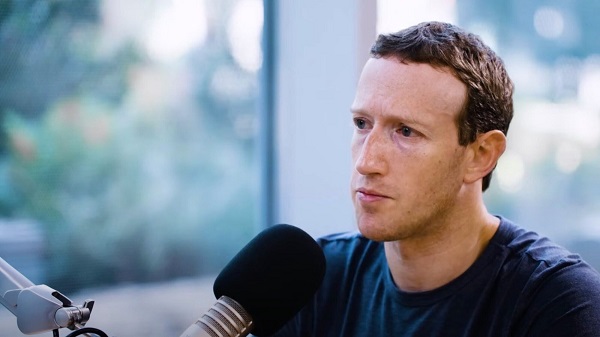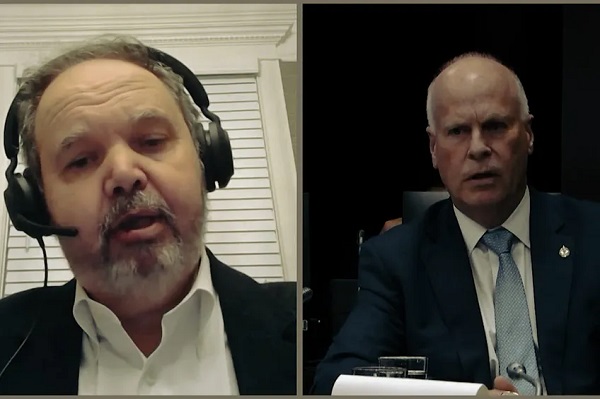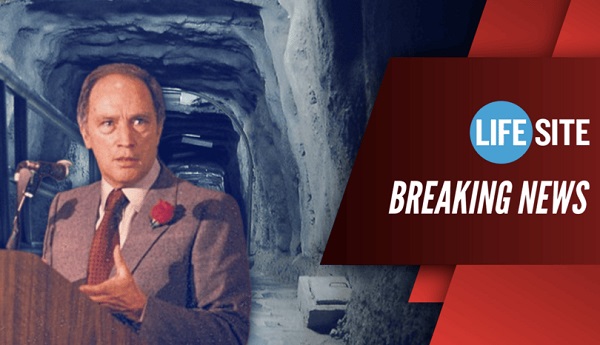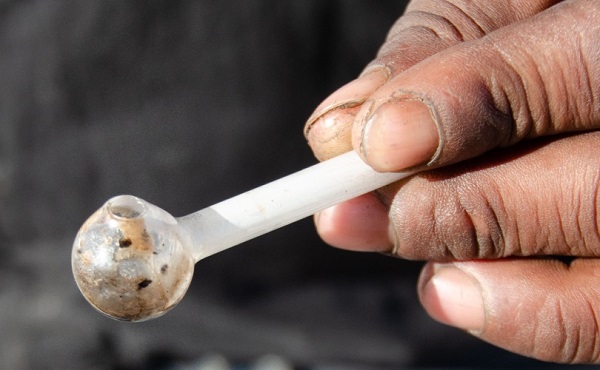Business
Trump ‘tariffs’ threat should hasten trade liberalization among provinces

From the Fraser Institute
By Jake Fuss and Grady Munro
To much fanfare, President-elect Donald Trump has threatened to impose a 25 per cent tariff on all imported products coming into the United States from Canada. The premiers will meet with Prime Minister Trudeau this week to discuss the situation and possible next steps. While the discussion will no doubt focus on trade with the U.S. and other countries, they should also consider trade reform within our national border.
Indeed, provinces and territories have considerable autonomy to set rules for trade with other Canadian jurisdictions. These rules (or barriers) include different inspection and labelling requirements for agricultural goods, different trucking regulations, different standards and certifications for professionals, provincial monopolies over alcohol distribution, and more.
As with international barriers, trade barriers within Canada inhibit the free flow of goods, services and labour between provinces, which reduces productivity and increases prices. In other words, Canadians pay the price for our interprovincial trade barriers. And the costs are significant. Research suggests that interprovincial trade barriers add between 7.8 per cent and 14.5 per cent to the price of goods and services including groceries and other necessities.
More broadly, according to a 2020 study published by the Fraser Institute, interprovincial trade barriers cost the Canadian economy more than $32 billion per year or approximately 1.4 per cent of GDP. According to a TD report released last month, a 10 per cent across-the-board tariff by the U.S. (and the subsequent retaliation by Canada on U.S. imports) would reduce Canada’s GDP by approximately 2.4 percentage points over two years, compared to current baseline projections. Therefore, if Canadian policymakers removed interprovincial trade barriers they could mitigate much of the economic harm caused by potential new U.S. tariffs.
What would those changes look like?
While the Canadian Free Trade Agreement (CFTA)—a 2017 agreement between the federal government and all provincial and territorial governments—was an important step toward greater trade liberalization in Canada, the Trudeau government should propose a policy of “mutual recognition” so that any item that meets the regulatory requirements of a single province or territory automatically satisfies the requirements of another.
And while the federal government should promote free trade within Canada, provincial and territorial governments should also reduce barriers. In addition to negotiating agreements among themselves (such as the New West Partnership Trade Agreement between British Columbia, Alberta, Saskatchewan and Manitoba) provinces can unilaterally eliminate self-imposed trade barriers (as Alberta did in 2019 with grazing permits for livestock and other reforms).
Trade is fundamental to economic activity, opportunity and prosperity for Canadians from coast to coast. In light of Trump’s aggressive trade posture, now more than ever the federal government and the provinces and territories should work together to remove interprovincial trade barriers to mitigate any economic damage from a hostile trade regime south of the border.
Business
Meta Pushes for a Digital ID Revolution

If you’re tired of censorship and surveillance, subscribe to Reclaim The Net.
|
Meta is coming out as a supporter of age verification, and the proposal the giant is putting forward exposes and sums up many of the points critics have been consistently making.
A blog post by Meta VP and Global Head of Safety Antigone Davis proposes to implement age verification at the operating system/app stores level. Although the narrative around child safety and difficulties of parenting “in the digital age” dominates the article, “the meat of it” are the implications that this approach brings with it: namely, it creates a situation where, down the line, people would be forced to link real-world identity to their phone’s operating system (OS).
And everything they do using the phone is exposed to that OS. Davis goes into how the EU (notably via the Digital Services Act) is trying to resolve the problem of age verification, but doesn’t think any existing methods are good enough; instead, new regulation is needed, the Meta exec argues – and that would be the one that “applies to all apps.”
It means incorporating “the point of approval” into the OS or app stores. The parents would be notified when their child downloads an app, which would allow them to approve it. (The idea seems to be that if a jurisdiction has laws that prohibit a certain category of minors from using certain apps – it would be the parents’ job to “enforce” that.) It might not sound like a very reliable way to ensure compliance, but it would achieve some goals, in the grand scheme of things, quite separate from what the “think of the children” argument seeks to present as the reason for the age verification push. Meta is trying to lead the way here in introducing “industry standards” – the proposal looks to embed the technology into different operating systems and app stores. When it comes to what a social media company should consider age-appropriate content, Meta is again urging common “standards” that would be observed by everyone. And, some countries already require that parents provide government-issued ID to app stores in order for their children to use a phone and set up accounts. Meta wants the EU to “mandate by a legislative framework that applies across all member states and for all apps teens use.” |
|
|
|
You subscribe to Reclaim The Net because you value free speech and privacy. Each issue we publish is a commitment to defend these critical rights, providing insights and actionable information to protect and promote liberty in the digital age.
Despite our wide readership, less than 0.2% of our readers contribute financially. With your support, we can do more than just continue; we can amplify voices that are often suppressed and spread the word about the urgent issues of censorship and surveillance. Consider making a modest donation — just $5, or whatever amount you can afford. Your contribution will empower us to reach more people, educate them about these pressing issues, and engage them in our collective cause. Thank you for considering a contribution. Each donation not only supports our operations but also strengthens our efforts to challenge injustices and advocate for those who cannot speak out.
Thank you.
|
Business
Ottawa’s GST break and rebate cheques amount to bad policy

From the Fraser Institute
By Jake Fuss and Grady Munro
On Thursday, the House of Commons passed legislation (tabled by the Trudeau government) that would temporarily suspend the federal Goods and Services Tax (GST) on select items from December 14 to February 15 at an estimated cost of $1.6 billion, as part of the government’s “more money in your pocket” plan. The legislation now goes to the Senate for approval.
The government has delayed a separate proposal—to give Canadians $250 rebate cheques—in light of NDP demands to expand eligibility to include seniors. The original proposal would have sent cheques to an estimated 18.7 million Canadians (who worked in 2023 and earned $150,000 or less) at a cost of $4.7 billion. While aimed at all Canadians, this proposal is eerily similar to the recent move by Ontario’s Ford government, which plans to send $200 cheques to Ontarians. And again, it’s just bad policy.
Why?
Consider this. During the recent discussion about increasing Old Age Security payments by 10 per cent for seniors aged 65 to 74, former Bank of Canada governor David Dodge said, “The last thing that we need to be spending money on at this point in time is boosting consumption for relatively well-off people.” This critique also applies to the Trudeau government’s $250 rebate cheques, which would go to many well-off Canadians. Indeed, based on the government’s original proposal, a couple earning a combined household income of up to $300,000 could receive these cheques.
Moreover, because onetime payouts and temporary tax breaks don’t incentivize people to work and invest, they don’t help raise living standards. But permanent tax cuts, such as reducing personal income tax rates or lowering capital gains taxes, would provide a stronger incentive for Canadians to work more and make investments because they get to keep more of the money they earn. That would help drive economic growth, create jobs and provide more economic opportunities for workers across the income spectrum.
In fact, the Trudeau government’s plan may actually hurt economic growth in the long run. The government is expected to run budget deficits for the foreseeable future, and will likely borrow the billions needed to pay for the GST break and $250 cheques. In other words, this “relief” package will likely increase the federal deficit in 2024 and potentially 2025. By borrowing more money, the government will increase the tax burden on future generations of Canadians who ultimately must pay off today’s debt. And just as lower taxes improve economic incentives, this higher future tax burden will worsen incentives and likely stifle economic growth and reduce living standards.
Don’t be deceived. While it’s nice to get a cheque in the mail and have a couple months free of the GST for some items, the Trudeau government’s “more money in your pocket” plan is bad policy.
-

 Alberta2 days ago
Alberta2 days agoThe Alberta energy transition you haven’t heard about
-

 espionage2 days ago
espionage2 days agoShock interview reveals big names connected to international paedophile network
-

 Business2 days ago
Business2 days agoTrump Announces Border Deal With Mexico, Sheinbaum Agrees To Close Border
-

 Brownstone Institute1 day ago
Brownstone Institute1 day agoJustice Is Served: Jay Bhattacharya Chosen to Be NIH Director
-

 Business1 day ago
Business1 day agoGreen Energy or Green Grift? SDTC at the Center of a $38 Million Scandal
-

 Crime1 day ago
Crime1 day agoThe Bureau Exclusive: The US Government Fentanyl Case Against China, Canada, Mexico
-

 Bruce Dowbiggin1 day ago
Bruce Dowbiggin1 day agoClimate & Covid: How The Certainty of Elites Destroyed A Decade
-

 Crime1 day ago
Crime1 day agoTrafficking victim advocate analyzes testimony of reported survivor of elite abuse network








